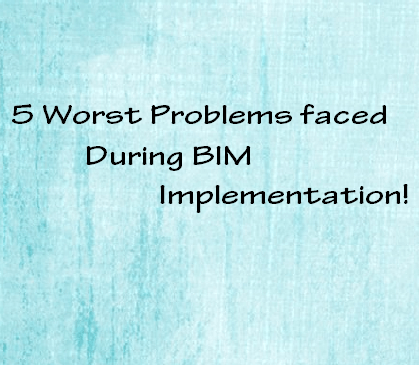BIM problems faced during implementation
Even though BIM is a widely accepted technology in building construction industry, we can still see many small firms are reluctant to follow it thinking that it is only relevant for the large scaled construction business, high-end architects, government projects or environment focused organizations. Lack of proper understanding and the misinformation about BIM is the major problem that this advanced technology faces. According to the survey conducted by the National Building Specification (NBS), there are five most common problems faced by construction industry while integrating BIM technologies.
Less demand from Client’s sides
This is the most important challenge faced by construction industries while trying to implement BIM in their projects. Even though the firms are well-informed about the benefits of this new way of handling construction business, the clients are not on-board with the principle. Most of the small-scale industries and some larger firms are yet to adopt BIM technologies. If the clients do not demand BIM service, the firms cannot compel them to adopt it.
No requirements of BIM technologies for typical projects
The other problem is that the different characteristics of each construction projects. Industries always try to work on specific types of projects for which they keep on getting a commission. BIM technologies are not suitable for all kinds of projects. We cannot apply standardized techniques for some projects that have unique characteristics. Smaller organizations mainly face this problem than larger ones. Even though BIM technology can save time and cost for all types of projects, the cost to value ration of implementing BIM is not much benefit.
Less benefit from BIM for small projects
Once BIM has been adopted into the fold, then we can implement the techniques easily in all types of projects. Moreover, it is true that BIM actually helps in cost and time savings. But, for a construction firm that handles only small projects, going through the entire procedure of BIM implementation into the system may not be cost-effective. Therefore, many organizations that deal with smaller projects avoid implementing BIM only because of the small size of the projects.
The high cost of BIM implementation
The biggest problem that any business organization can arise, is the high cost of BIM implementation. The initial cost of upgrading equipment and technologies is not the problem. Instead the other less tangible expenses matter. BIM implementation is not completed just with the upgrading of software technologies. But, all elements of business operations from compliance applications to vendor component specification should be streamlined and integrated into one single system. Moreover, different levels of training are also required. If the in-house project manager does not have the required skill, the organization has to hire a special BIM manager that may increase the cost again.
Lack of BIM experts
Most of the construction organizations do not have employees, who are expert in BIM techniques and principles. As a result, they need to seek the help of external experts to deal with BIM problems like integration issues. It also leads to increase in expense while implementing BIM techniques.



Leave a Reply